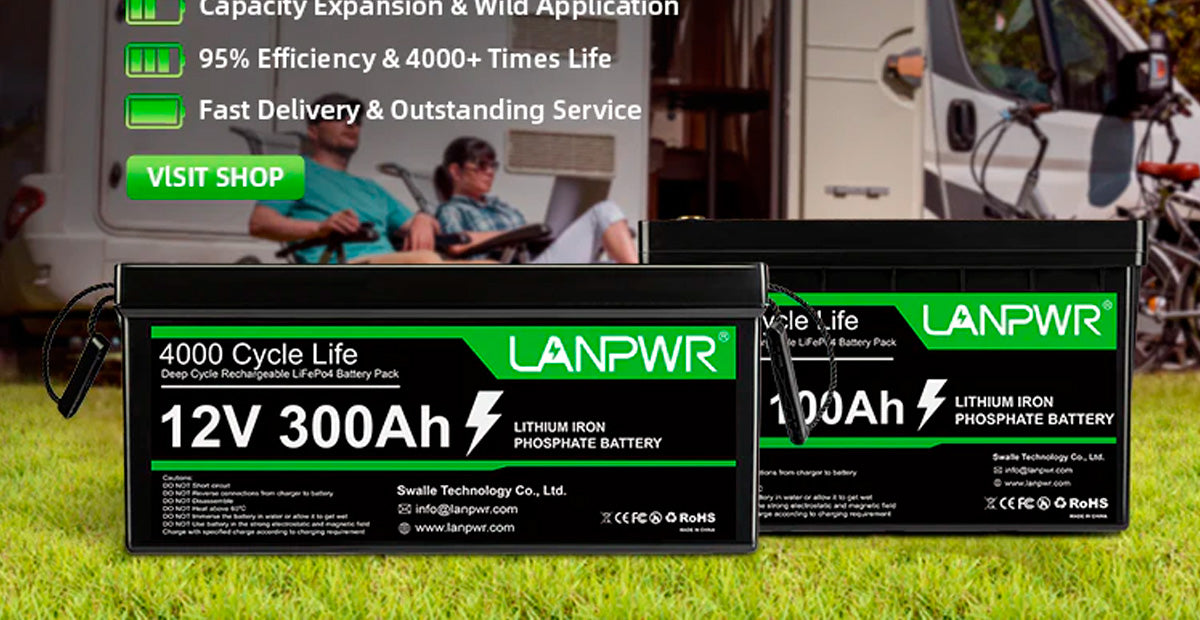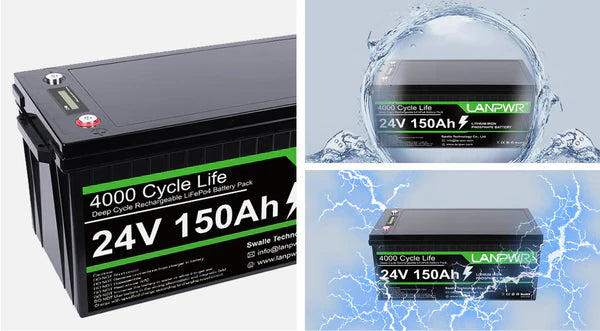With their increased efficiency over lead-acid and other lithium-ion chemistries, Lithium Iron Phosphate (LiFePO4) batteries have been an emerging technology over recent years. However, along with their many advantages, they also have some vulnerabilities and restrictions. The Benefits and Hazards of LiFePO4 Batteries.
Benefits of LiFePO4 Batteries
Higher Energy Density
LiFePO4 batteries have increased energy density in comparison to a traditional lead-acid battery. So they can retain more energy in a smaller and lighter package and are especially useful for things like electric vehicles (EVs) and portable recorders. A higher energy density means more runtime and better performance.
Longer Cycle Life
The greatest appeal of LiFePO4 batteries is their long cycle life. These batteries usually lose their usefulness after 2,000–3,000 charge-discharge cycles, although there are improved models that extend this number up to around 5,000 cycles. This is significantly better than the cycle life of lead-acid batteries, which, generally, is between 300 and 500 cycles. As such, reducing the frequency in which the battery needs to be replaced not only lowers maintenance costs but also means less environmental impact over the life of the unit.
Improved Safety
LiFePO4 batteries are a very safe battery technology. They are renowned for their outstanding thermal and chemical stability, which greatly mitigates the likelihood of overheating and thermal runaway–a condition when a battery overheats to significantly high temperatures uncontrollably. That means LiFePO4 batteries are less likely to catch fire or explode even if they are overcharged, short-circuited, or physically damaged (hit, punctured, etc.
Fast Charging Capabilities
LiFePO4 in batterie can get charged faster than Lead-acid normally used in the bikes. They can handle large charge and discharge currents, so this makes them useful in use cases that require quick charge times and high power output. For instance, faster charging times in electric vehicles mean less downtime and more convenience to users.
Low Maintenance
LiFePO4 batteries On the other hand, unlike lead-acid batteries they need regular maintenance to perform at their best (Check to see if the electrolyte is enough, Clean the terminals, etc. In situations where being able to pick up and use an application without needing to think about it, much less learn any new material, this is a great boon.
Environmental Friendliness
LiFePO4 batteries are the more eco-friendly of battery chemistries, with much lower rates of decay. Not only do they not have toxic heavy metals such as lead or cadmium, but they also have a longer shelf life so fewer batteries need to be produced and discarded. On top of that, the materials of the LiFePO4 batteries as they are more common will reduce toxic waste.
Extended Temperature Range
LiFePO4 batteries can operate effectively in a temperature range from -20°C to 60°C and under harsh working conditions with no significant decrease in performance.
Stable Voltage
LiFePO4 batteries also maintain stable voltage output during their discharge. It is vital in applications that cannot tolerate even intermittent power loss, such as medical equipment, telecommunications, and solar energy storage systems.
Problems associated with lithium-ion LiFePO4 batteries
Less Energy Dense Than Other Lithium-Ion Batteries
Although LiFePO4 batteries offer a higher energy density than lead-acid batteries, LiFePO4 batteries exhibit lower energy density than other lithium-ion chemistries such as lithium cobalt oxide (LiCoO2 and lithium nickel manganese cobalt oxide (NMC). Consequently, they may not be the ideal selection for applications where energy density is essential, such as some portable electronics.
Higher Initial Cost
The LiFePO4 battery has a higher cost than lead-acid batteries at an initial cost. While the long lifecycle and low maintenance costs will ultimately recoup these investments, high up-front costs make them prohibitive for some users and some applications, especially when budgets are tight.
BMS (Battery Management System) requirements are complex
LiFePO4 batteries also need a good battery management system (BMS) in general to perform well. The BMS helps protect your battery from overcharging, deep discharge, and overheating by monitoring several parameters such as voltage, temperature, and state of change. A good BMS is complex and expensive, while this system is so simple and cheap to implement that the only real potential worry might be it burning out NVIC-style and the way the discovery that dumping a bunch of water on a circuit the size of the Giza Dam may somehow cause it to catch fire.
Weight and Size Requirements
While having less weight and a smaller form factor than lead-acid batteries, LiFePO4 cells are also typically heavier and bulkier than other lithium-ion chemistries with the same energy capacity. Only this thing can be disadvantageous in a few applications due to size and weight constraints.
Low Supply, Low Production Limit
LiFePO4 battery production capacity is currently lower than the latter two types of lithium-ion batteries. It means you may run into capacity constraints and, particularly since the demand for these batteries is booming across all sorts of industries, longer lead times to procure the batteries.
Conclusion
LiFePO4 batteries have a range of advantages over similar technologies such as higher energy density, longer cycle life, better safety, fast charging times, low cost of ownership, operating temperature, environmental friendliness, and stable voltage output. Based on these advantages, they are used for different applications, chiefly in electric vehicles, renewable energy storage, and critical power systems.
While LiFePO4 batteries can provide some benefits as well as negate some of the risks that come with 18650 Lithium-ion battery use; namely, lowering the overall load to the 18650 cells when used in parallel, the charging rate during overland driving is limited, as well as being more costly, heavier, and bulkier, and require a complex Battery Management System (BMS) to prevent failure caused when charging/discharge limits are reached on one set of 4 cells in the module, it can suffer from the limited availability, recycling limitations, and potential for short term performance loss when discharging beyond the high discharge rate limits that might be further increasing once desulfation, current infuse blockers or modules sold as spares. It is important to keep in mind that to make an informed decision about whether or not to switch to LiFePO4 battery technology, one must be aware of the risks and all the benefits associated with the technology.
With the development of technology and the increasing need for sustainable energy solutions, LiFePO4 batteries are likely to be increasingly involved in energy storage. Maximizing their potential and ensuring their smooth deployment in various applications will depend on balancing their pros and their challenges.














Leave a comment
This site is protected by hCaptcha and the hCaptcha Privacy Policy and Terms of Service apply.